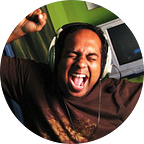Raga & time association
A small effort by creating an infographic from whatever limited knowledge i have about Hindustani Classical music lovers.
Music is a universal language. It influences all levels of human existence. It is a medium for communication, which can be both a pleasant and healing experience.
Modern science and medicine are now rediscovering the healing powers of music. And music therapy — the specialized use of music in treating persons with special needs in mental and physical health, rehabilitation and special education — is gaining ground. In the West it is now an accepted form of treatment even within orthodox medical practice.
Music is an age-old part of Ayurveda, the holistic science which promotes a happy and healthy lifestyle. From time immemorial, music has been a part of Indian culture. In the Vedas too, music has an important place. The ‘Samveda’ is full of music. The doshas like Vata, Pitta and Kapha can be controlled effectively by Music Therapy. Great composers of Indian classical music have attempted music therapy down the years. Legend has it that classical music maestro Thyagaraja brought a dead person back to life with his composition.
It is believed that music stimulates the pituitary gland, whose secretions affect the nervous system and the flow of blood. It is believed that for healing with music, it is necessary to vibrate the cells of the body, for it is through these vibrations that the diseased person’s consciousness can be changed effectively to promote health. The right kind of music helps one relax and refresh. Even during the course of working, light music improves efficiency. Listening to music helps control negative aspects of our personalities like worry, bias and anger. In addition, it can help cure headache, abdominal pain and tension. Music therapy is one of the most effective ways of controlling emotions, blood pressure and restoring the functioning of the liver.
The Raga Research Centre in Chennai,India. is currently making a comprehensive study of Indian ragas and evaluating their therapeutic potential with the help of musicians, doctors and psychiatrists. It is believed that classical Indian ragas can benefit a whole host of conditions ranging from insomnia, high and low blood pressure to schizophrenia and epilepsy.
It is believed that there are other ragas that can help fight ageing and pain, too.
Music is capable of improving happiness, peace, health and concentration. It is however important to know the method and duration for which Music Therapy is to be administered. This knowledge can be obtained through regular experiments and experience. The first step towards this is the correct diagnosis of the disease and then the selection of the precise raga that will be helpful. Procedure, discipline and a systematic method will help achieve this goal.
One of the unique characteristics of Indian music is the assignment of definite times of the day and night for performing Raga melodies. It is believed that only in this period the Raga appears to be at the height of its melodic beauty and majestic splendor. There are some Ragas which are very attractive in the early hours of the mornings; others which appeal in the evenings, yet others which spread their fragrance only near the midnight hour.
This connection of time of the day or night, with the Raga or Raginis is based on daily cycle of changes that occur in our own body and mind which are constantly undergoing subtle changes in that different moments of the day arouse and stimulate different moods and emotions.
Each Raga or Ragini is associated with a definite mood or sentiment that nature arouses in human beings. The ancient musicologists were particularly interested in the effects of musical notes, how it affected and enhanced human behavior. Music had the power to cure, to make you feel happy, sad, disgusted and so on. Extensive research was carried out to find out these effects. This formed the basis of time theory as we know it today.
It is believed that the human body is dominated by the three Doshas — Kaph , Pitta and Vata . These elements work in a cyclic order of rise and fall during the 24 hour period. Also, the reaction of these three elements differ with the seasons. Hence it is said that performing or listening to a raga at the proper allotted time can affect the health of human beings.
